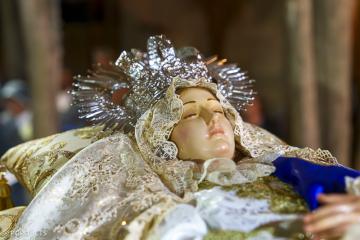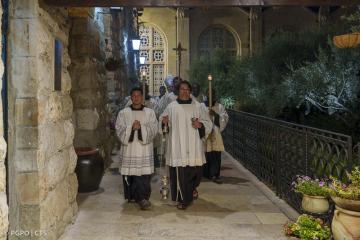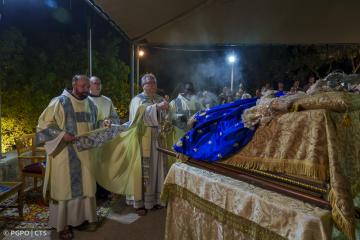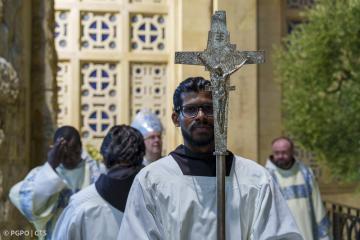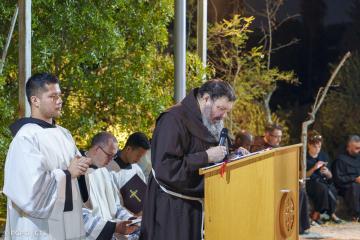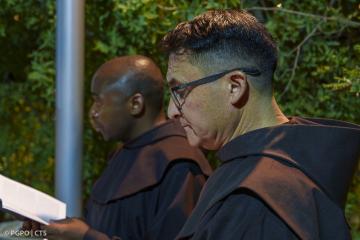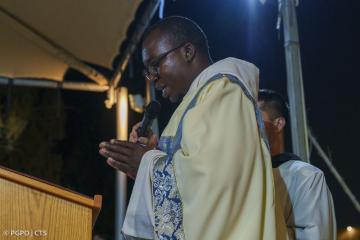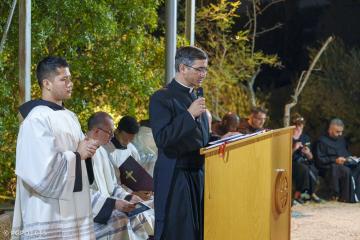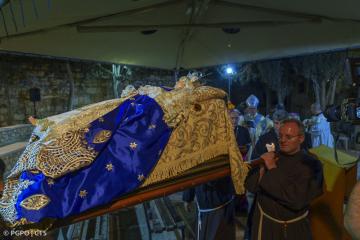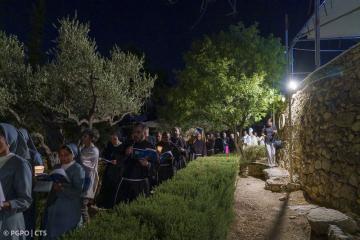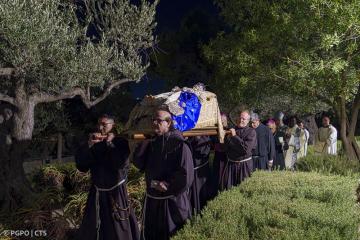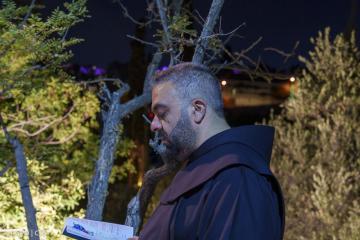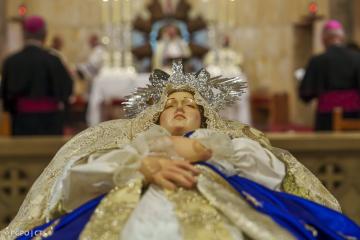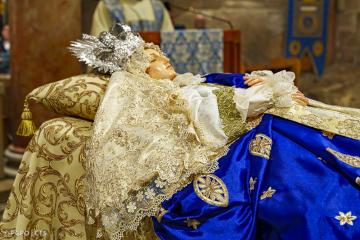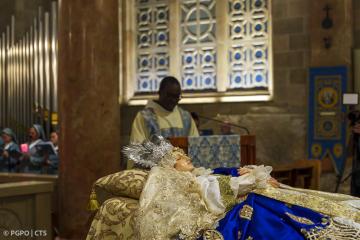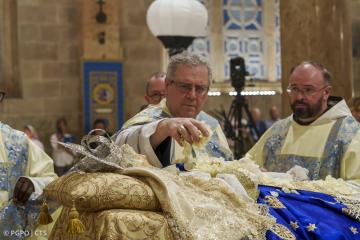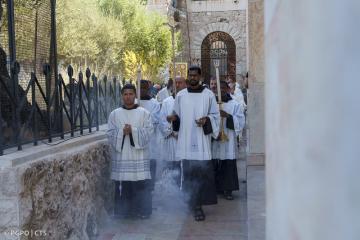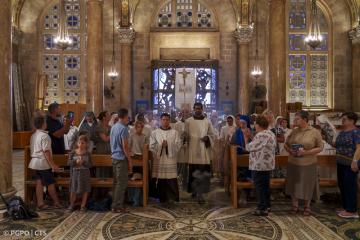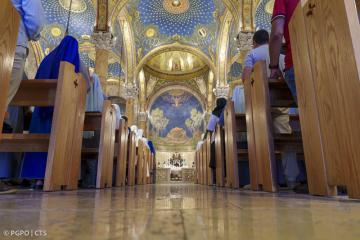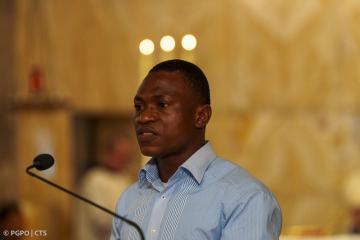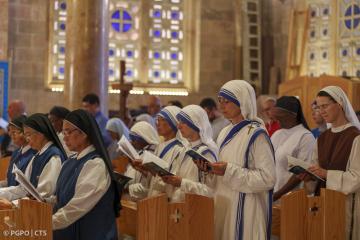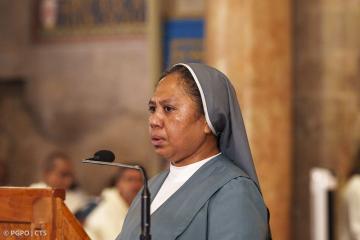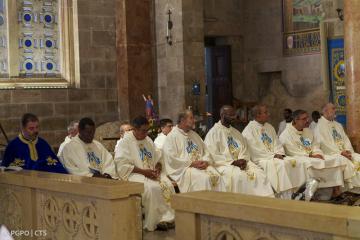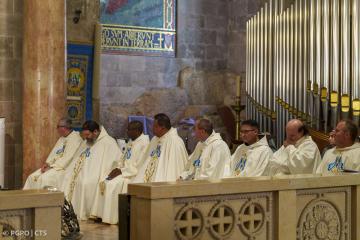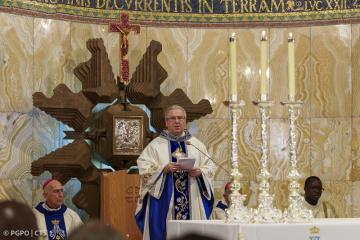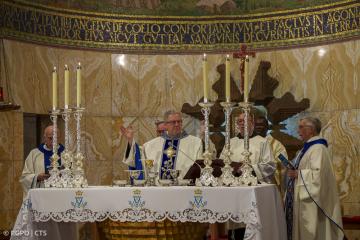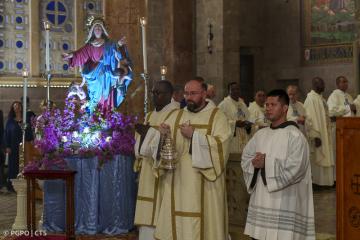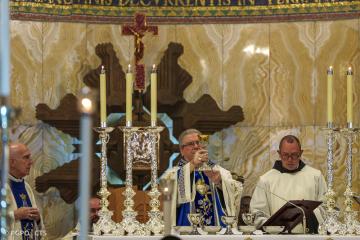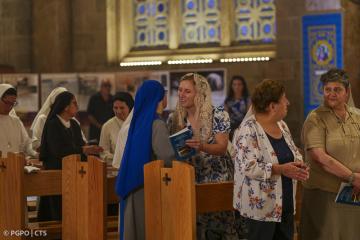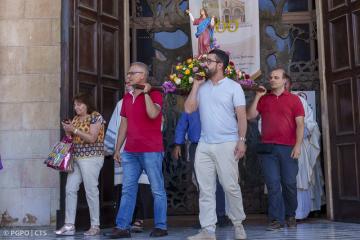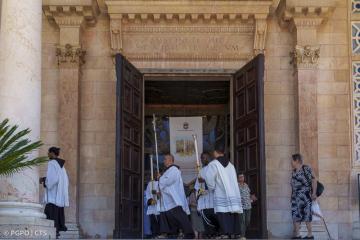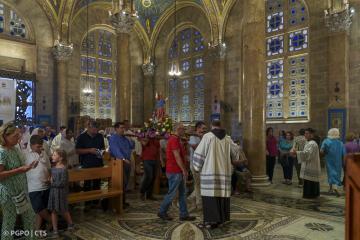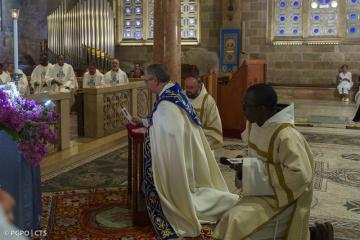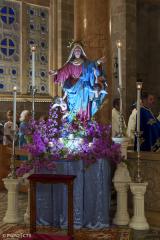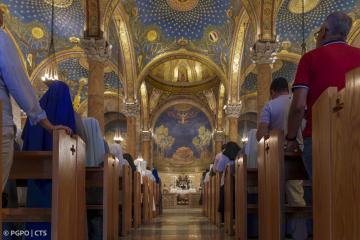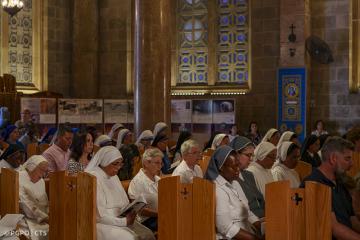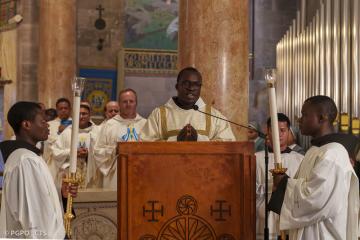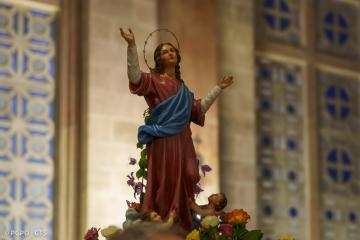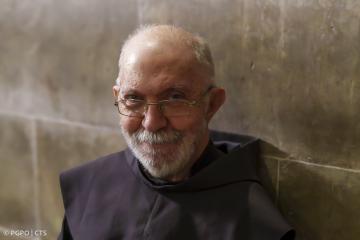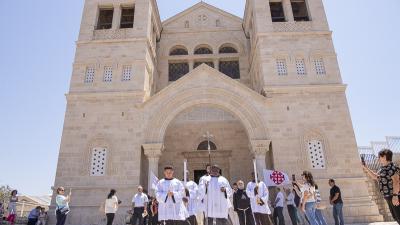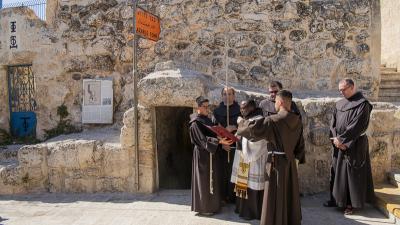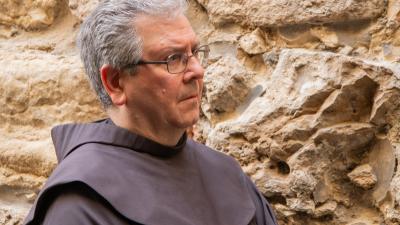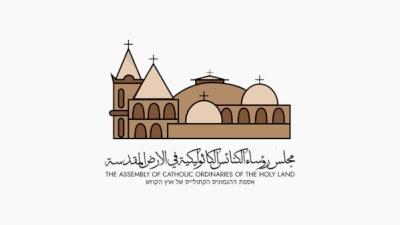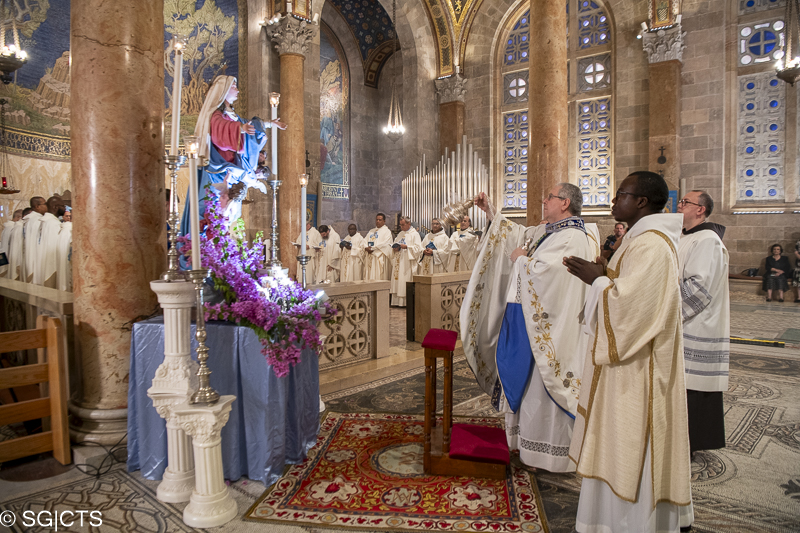
The supplication to Mary for peace rises continuously from Jerusalem on the day when her Assumption to Heaven is celebrated.
Mary’s tomb in Gethsemane at the foot of the Mount of Olives, the place of her assumption to heaven, has been venerated for centuries: the Franciscans, led by the Custos of the Holy Land, Fra Francesco Patton, celebrated the Solemnity of the Assumption here, between 14 and 15 August.
In this time of conflict and war, the special invocation for reconciliation between peoples, in the Holy Land and in the world, was made with an appeal by the Patriarch of Jerusalem of the Latins, H.B. Card. Pizzaballa who used a prayer prepared by the Guardian of the Convent of the Agony (Gethsemane), Fr. Siniša Srebrenović, and by Fra Patton.
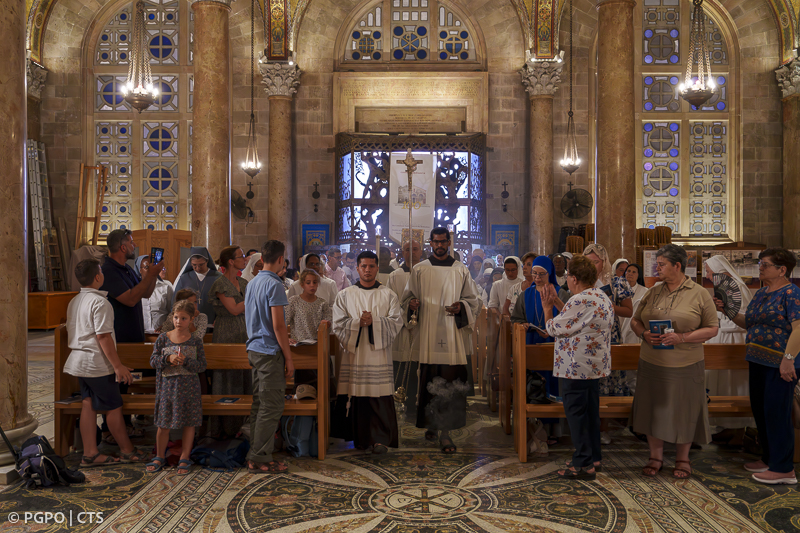
The rich celebrations started with the evocative vigil on the night of 14 August, in the garden of Gethsemane. The Solemn Mass was held on the morning of 15 August in the Basilica of the Nations; lastly, in the afternoon, after the recital of the Second Vespers in the “Grotto of the Apostles,” the solemnity came to an end with the peregrination to the tomb of Mary for the veneration of the holy place.
The celebration of the Transit of the Blessed Virgin Mary

The solemnity opened on the evening of 14 August with the vigil of prayer in the garden of Gethsemane. This is where the Dormition of the Virgin Mary is read, in which the story is told of the last days of the Virgin Mary, whose body is believed to have been laid by the apostles in a new tomb in the Kidron Valley, which three days later they found empty.. The religious, faithful and pilgrims present had the grace of praying in an atmosphere of meditation and silence.
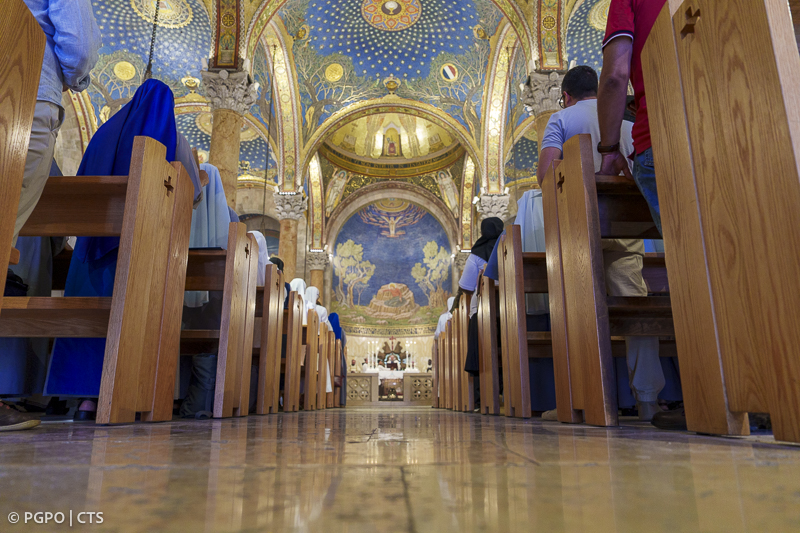
Amid lit torches and the songs to the Virgin Mary, the statue of the sleeping Mary was carried in procession to the nearby Basilica of the Agony, where the Jubilee of the Centenary of the construction of the basilica was celebrated on 1 July. The special anniversary of the jubilee coincides with that of the Basilica on Mount Tabor. The day of study (the full video-link is here) organized by the “Scientific Committee for the celebrations of the jubilees of the Basilicas of Tabor and of Gethsemane” and dedicated to the two Basilicas was held here very recently, in which two exhibitions “LuxTenebra” were also held which covered the historical and artistic aspects.
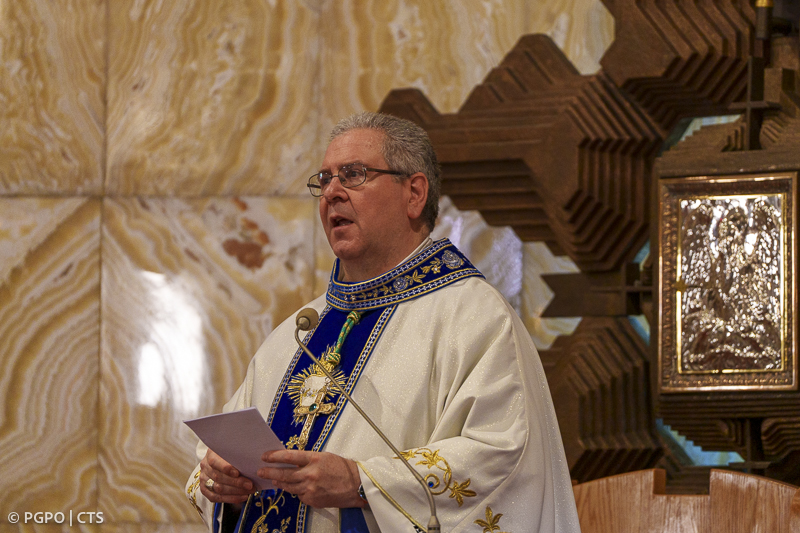
The Custos of the Holy Land invited the assembly to invoke peace through the supplication composed for the occasion: “This evening,” Fra Patton said, “we look to Mary, we look to what God operated in Her and we firmly believe that nothing is impossible for God: not even transforming this field of battle and death which is the world we live in into a garden of peace! (you can find the full text here)
The Feast of the Assumption
The Solemn Pontifical Mass was held on 15 August. In his homily, the Custos of the Holy Land stressed the figure of Mary as “prophecy”, inviting the assembly to interpret her words and life in the light of the Word of God: “Mary is the prophecy of this new world in her way of standing under the cross without being overwhelmed by the scandal of gratuitous evil, innocent suffering, unfair death,” the Custos said (you can read the full text here). Mary is the prophecy of this new world in her fully taking part in the Easter of her Son, herself becoming the first to rise jointly with Christ, a sign for us that the promises of her Son are fully realized.”

At the end of the Mass, the statue of the Virgin Mary was carried in procession in the garden of Gethsemane, amid prayers and the singing of the Litanies of the Virgin Mary. The Custos of the Holy Land then invited the assembly to recite the supplication for peace.
The Second Vespers and the procession to the Tomb of Mary
In the afternoon the Second Vespers were recited in the grotto of Gethsemane (you can read the Custos's reflection here): this grotto - called the “Grotto of the betrayal” or the “Grotto of the Apostles” – is believed to be the oldest part of Gethsemane, and access is on the right of the entrance to the church of Mary’s Tomb.
Lastly, the traditional procession to the Tomb of the Virgin Mary was held, on the only day when the Franciscans are allowed to make the peregrination. The Friars Minor, after a period of exclusive possession of the Tomb, were chased out of it for good in 1757. Today the place is in the care of the Greek an Armenian Orthodox and, together with Bethlehem, the Holy Sepulchre and the Ascension, the fourth Holy Place regulated by the Statu Quo, according to which the Franciscans can continue to go there exclusively on the occasion of the Feast of the Assumption.
All those present knelt one by one before the Tomb, to pay tribute to Mary, the Mother of Jesus.
Silvia Giuliano


